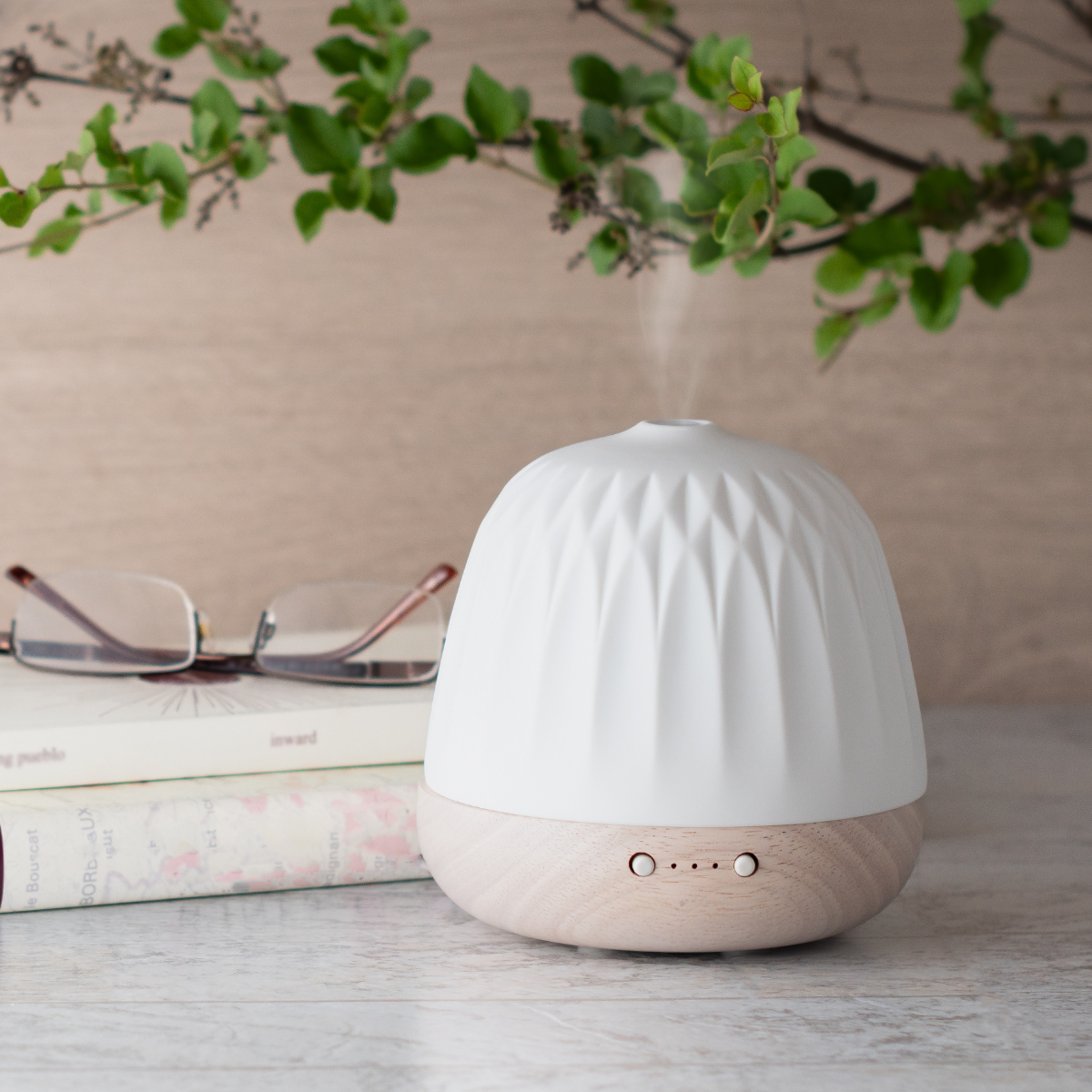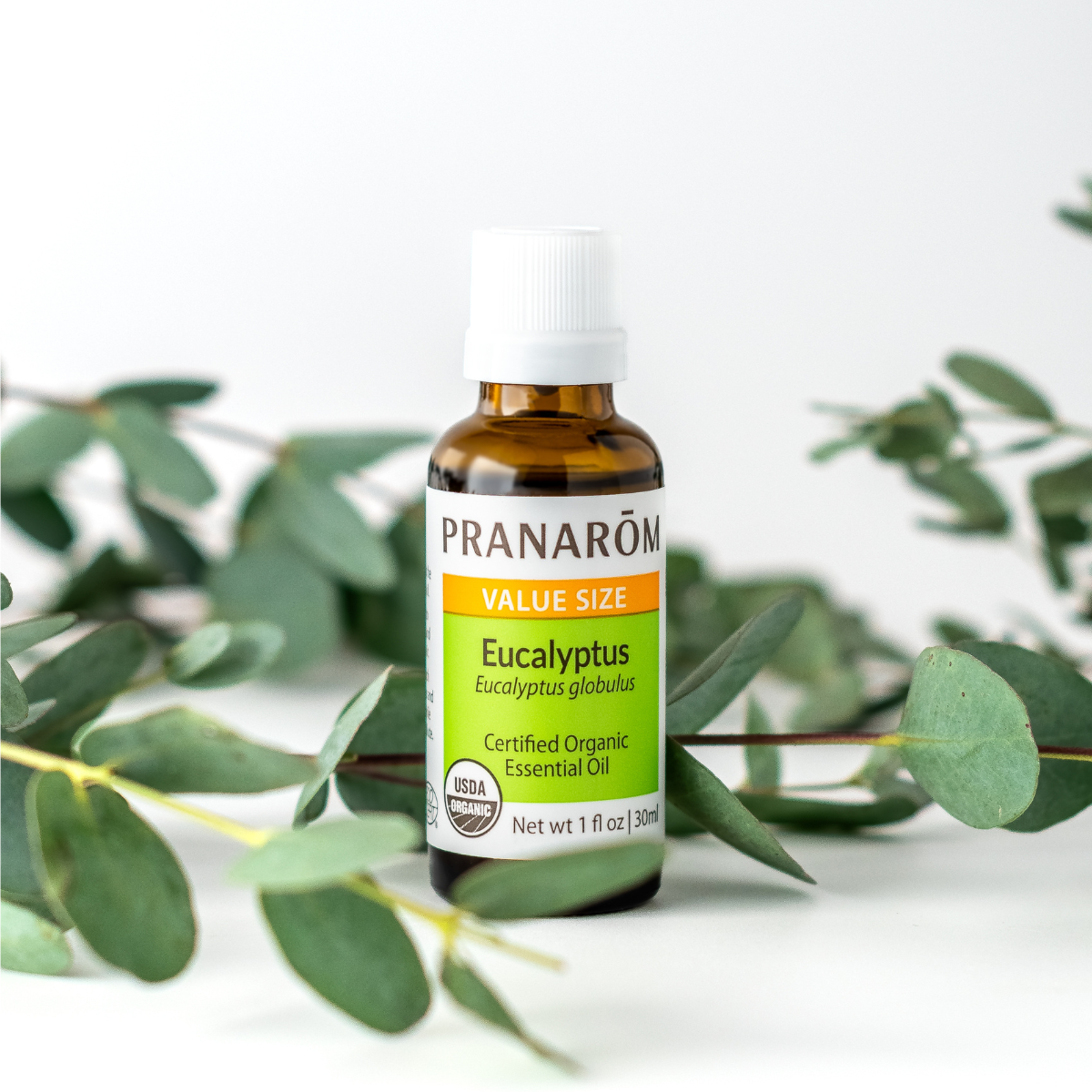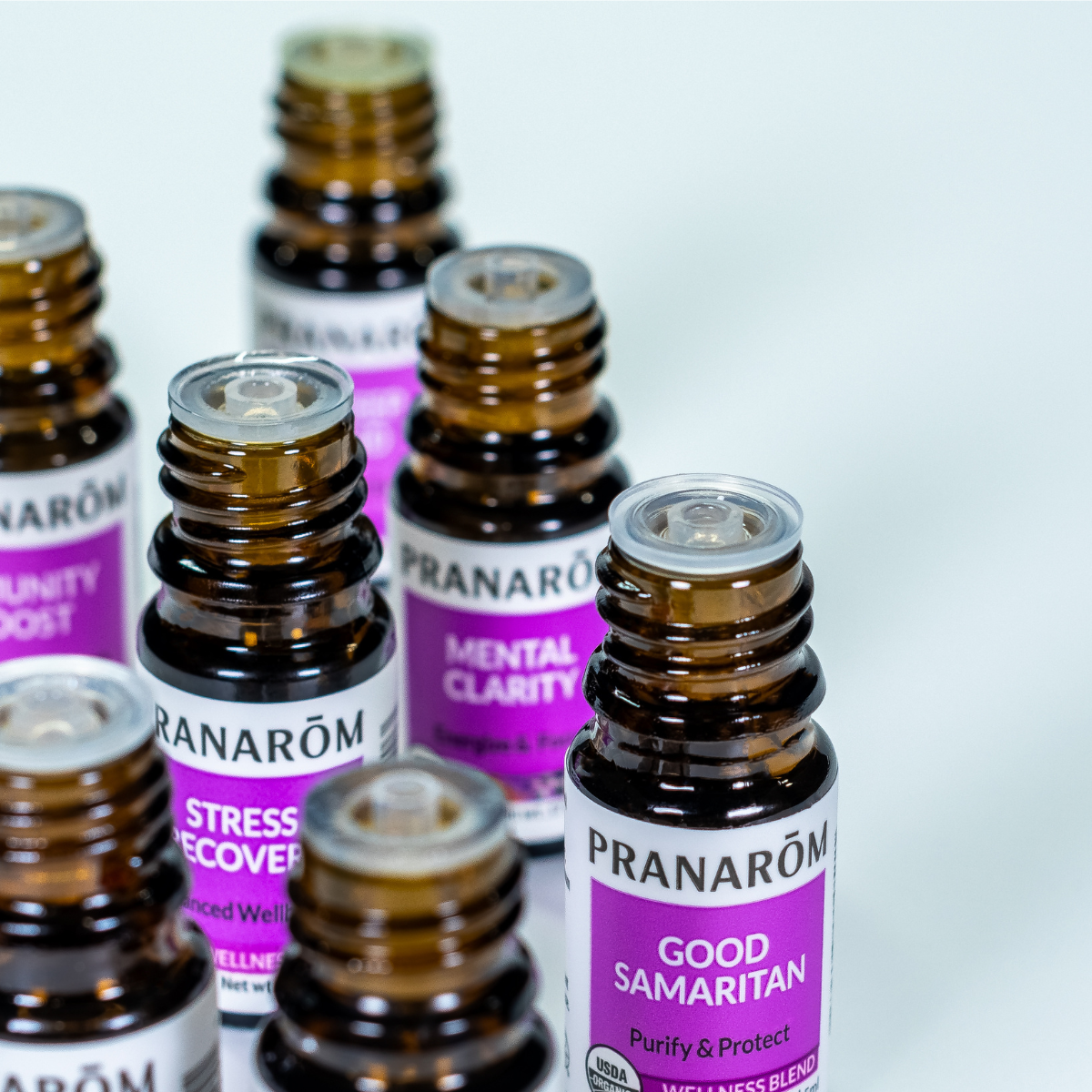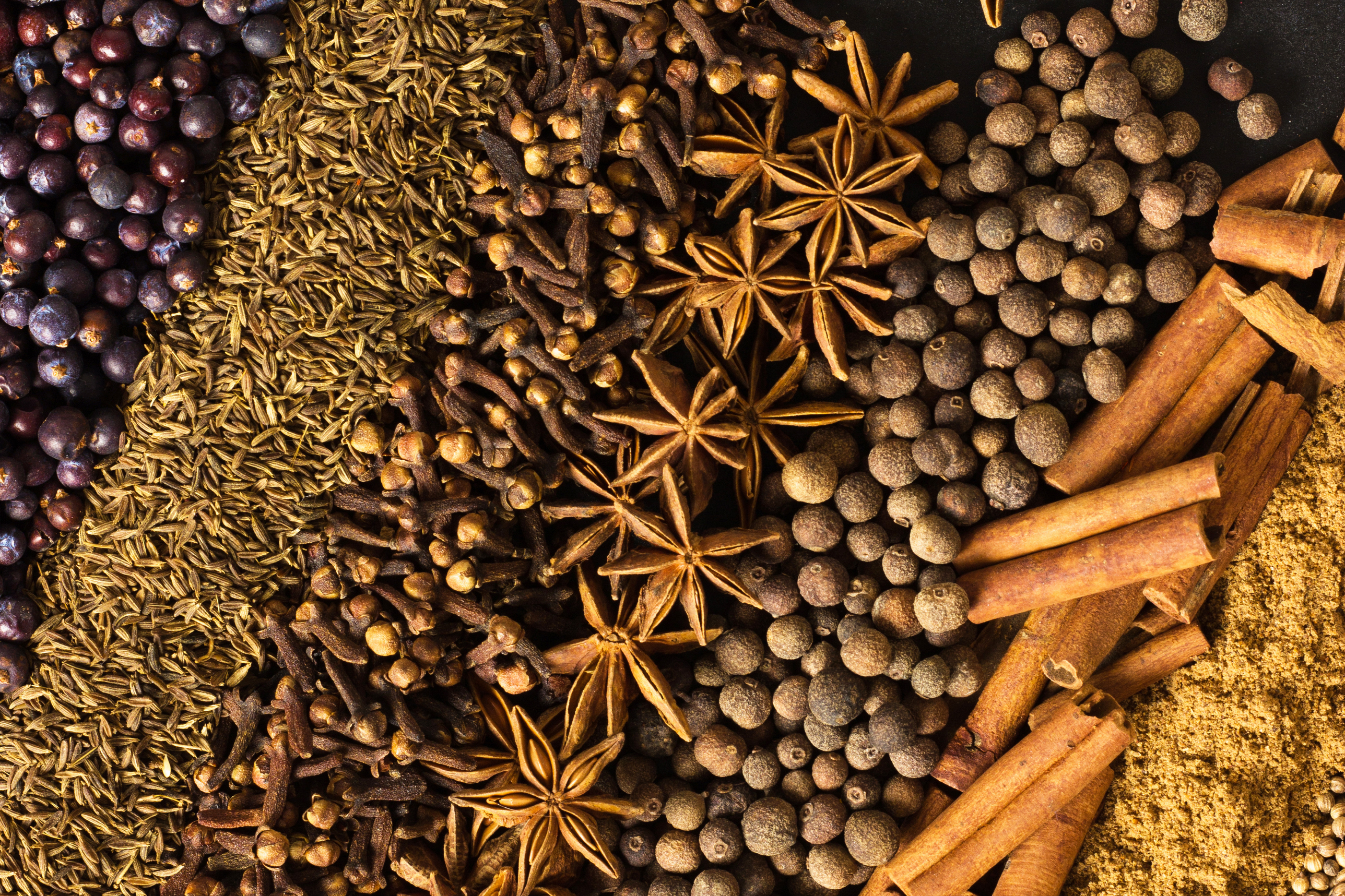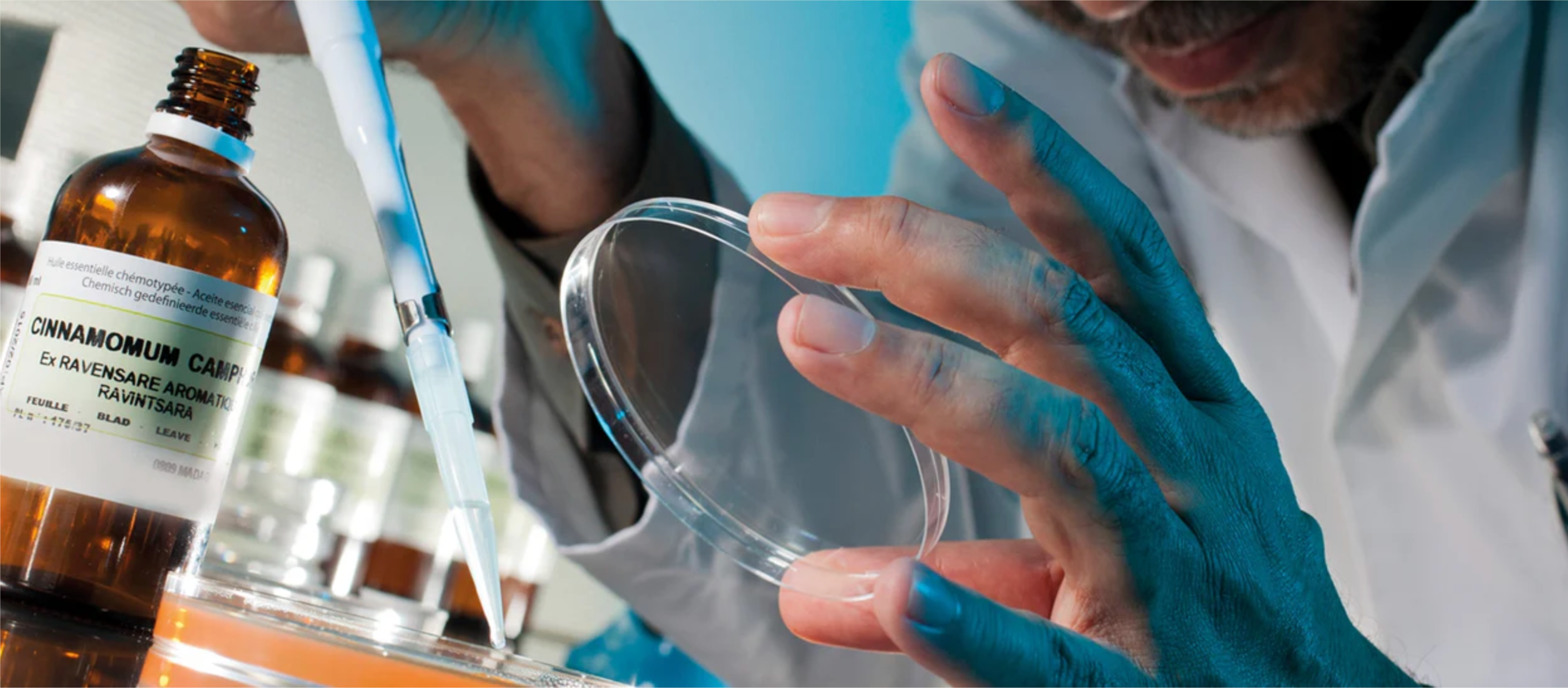Italian helichrysum essential oil
Italian helichrysum is a 12 to 20-inch plant that thrives in draining, dry, sunny soil. It has very fine, soft, whitish, silvery needle-shaped leaves on a woolly stem. Its flowers are small, golden-yellow heads that never fade. It's often called curry herb because of its warm, dry, slightly smoky notes reminiscent of curry.
Where does it come from?
Initially produced in Corsica, the success of this oil has led to additional production in France, Italy, Croatia, Serbia, Bosnia, and Albania.
What is it for?
Today, Italian helichrysum essential oil is primarily used in cosmetics for its "anti-aging" properties. At Pranarōm, we also use it for its healing support and powerful soothing abilities. Its absolutely bewitching fragrance aside, this essential oil has some serious calming and relaxing properties. It can be used on even the oldest bruises, bumps, and varicose veins. It's also recommended for blemish-prone skin, minor-wounds, scars, and itchy, patchy skin conditions, as well as for respiratory concerns. In short, it's a family first-aid kit in itself because it really does perform miracles.
Different profiles of Italian helichrysum essential oils
The origin of the crop distilled for Italian helichrysum essential oil is very important because of its significant impact on the oil's composition at a molecular level. There are many different chromatographic profiles—even among oils from the same source, place or origin.
3 main chromatographic profiles
-
the Corsican profile, rich in neryl acetate but with a variable concentration of italidione.[1]
-
various Italian profiles, [2] [3] sometimes rich in neryl acetate, [4] sometimes rich in italicene,[5] but often "poor" in italidione (exceptions exist).
This variability in profiles can be explained by a number of factors including soil characteristics, climate conditions, and variations in the harvesting period and the condition of the plant at the time of harvest. This naturally leads each origin to emphasize the superiority of its composition. Supporters of the Corsican profile will point to the benefits of a high level of neryl acetate for what is considered superior effectiveness.
Those in the Balkans, on the other hand, put forward Pierre Franchomme's and Daniel Penoël's theory that italidione is the crucial active ingredients in the essential oil's soothing action on bruises.
Although the effectiveness of Italian helichrysum is no longer in doubt, the physiological mechanisms behind its action remain a mystery... However, some recent scientific data seem to point to α-pinene for its anti-inflammatory properties[7][8] as well as for its protective effect on collagen and elastin, two molecules essential to tissue structure.[6] This latter property may well be behind the regenerative and healing effects of helichrysum oil. It could thus potentially preserve skin firmness and limit the "damage" linked to the inflammation that accompanies tissue trauma.
Quality criteria
As with all oils, the quality of Italian helichrysum oil depends mainly on the expertise of the producer and the storage conditions used to limit the presence of contaminants. What's more, given the high price of this oil, some producers don't hesitate to modify the composition of their oil by adding less expensive synthetic substances. Whatever origin you ultimately choose, make sure your supplier is reliable and suitable for you in terms of tolerance and effectiveness.
A few words of precaution
When used conscientiously, helichrysum oil presents few risks. If you're planning to use it for the very first time, we recommend you carry out a simple sensitivity test by placing 1-2 drops in the hollow of your elbow and watching for a potential reaction. If no redness, marks, or other reactions appear within 72 hours, then you should be fine to use the oil.
If you're pregnant, there are just a few rules you should be aware of. After 3 months of pregnancy, Italian helichrysum oil is not recommended. Before this date, it can be used diluted and for short periods of time. As a general rule, avoid applying oil to the abdominal area throughout your pregnancy.
After applying helichrysum essential oil, take care not to expose your skin to direct sunlight to preserve its health and beauty. The quality of helichrysum oil is also of the utmost importance. At Pranarōm, we are committed to offering you the highest quality helichrysum oil, thanks to our expertise in scientific aromatherapy. Our helichrysum essential oil is 100% pure and natural, organically grown and certified by Ecocert and the USDA—a guarantee of botanical and biochemical quality.
Everlasting, a precious ally for your skin
Mature skin + skin prone to redness
Helichrysum Hydrosol: toning facial mist
• Circulatory tonic
• Skin soother
Mist directly onto skin or apply with a cotton ball, cloth, etc...
• In the morning to refresh your skin
• In the evening to remove makeup and cleanse the skin
As a compress: 10 to 15 min on the area to be soothed.
Helichrysum Essential Oil: concentrated effectiveness
• Soothing & healing support.
• Regenerative promotion.
Apply neat or with a carrier oil to:
• Bruises (including trauma to muscles & joints)
• Redness, visible vessels
• Scars
• Dark circles and puffiness
A final word
In short, Italian helichrysum oil is a rare and exceptional product and one of Pranarōm's most beloved oils. It's appreciated as much for its effectiveness in cases of physical trauma as for its calming and healing support. Our own farmer's and distiller's expertise on the subject as well as recent studies published on the subject reinforce our conviction in the quality and interest of this oil's molecular profile.
Bibliography
[1] Ange Bianchini Pierre Tomi Jean Costa Antoine François Bernardini (2001) –“Composition of Helichrysum italicum (Roth) G. Don fil subsp. Italicum essential oils from Corsica (France)” Flavour and Fragrance Journal 16(1):30-34 · January 2001.
[2] JulienPaolini, Jean‐Marie Desjobert, Jean Costa, Antoine‐François Bernardini, Cinzia Buti Castellini, Pier‐Luigi Cioni, Guido Flamini, Ivano Morelli (2006) – « Composition of essential oils of Helichrysum italicum (Roth) G. Don fil subsp. italicum from Tuscan archipelago islands” Flavour and Fragr J 21: 805–808.
[3] Leonardi M, Giovanelli S, Ambryszewska K, Ruffoni B, Cervelli C, Pistelli L, Flamini G, Pistelli L (2018) – “Essential oil composition of six Helichrysum species grown in Italy.” Biochemical Systematics and Ecology. 79. 15-20. 10.1016/j.bse.2018.04.014.
[4] Leonardi M, Ambryszewska KE, Melai B, Flamini G, Cioni PL, Parri F, Pistelli L. (2013) – “Essential-oil composition of Helichrysum italicum (ROTH) G.DON ssp. italicum from Elba Island (Tuscany, Italy).” Chem Biodivers. 2013 Mar;10(3):343-55. doi: 10.1002/cbdv.201200222.
[5] Emilia Mancini, Laura De Martino, Aurelio Marandino, Maria Rosa Scognamiglio, Vincenzo De Feo (2011) – “Chemical Composition and Possible in Vitro Phytotoxic Activity of Helichrsyum italicum (Roth) Don ssp. Italicum” Molecules 2011, 16(9), 7725-7735; https://doi.org/10.3390/molecules16097725
[6] Fraternale D, Flamini G, Ascrizzi R (2019) – “In Vitro Anticollagenase and Antielastase Activities of Essential Oil of Helichrysum italicum subsp. italicum (Roth) G. Don.” J Med Food. 2019 Jun 14. doi: 10.1089/jmf.2019.0054.
[7] Zhou JY1, Tang FD, Mao GG, Bian RL. (2004) – “Effect of alpha-pinene on nuclear translocation of NF- kappa B in THP-1 cells.” Acta Pharmacol Sin. 2004 Apr;25(4):480-4.
[8] Kim DS, Lee HJ, Jeon YD, Han YH, Kee JY, Kim HJ, Shin HJ, Kang J, Lee BS, Kim SH, Kim SJ, Park SH, Choi BM, Park SJ, Um JY, Hong SH. (2015) – “Alpha-Pinene Exhibits Anti-Inflammatory Activity Through the Suppression of MAPKs and the NF-κB Pathway in Mouse Peritoneal Macrophages.” Am J Chin Med. 2015;43(4):731-42. doi: 10.1142/S0192415X15500457. Epub 2015 Jun 28

